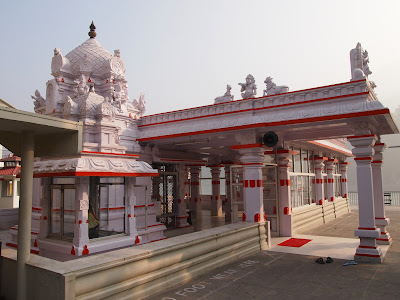Phew! This is a hard one. Meditation means different things to different people. To a religious person, meditation may mean contemplation of God, in prayer or study. To a Zen practitioner, it is entering a space of "sacred emptiness". To a Transcendental meditator, it could be the mental repetition of a sound to the exclusion of all else. And that's just for starters. There are infinite roads to that intangible state called meditation, yet there is a commonality running through all its forms.
What the yogis of old tell us about meditation is that, according to the Yoga sutras, meditation is the process of stilling the thought waves of the mind. This is rather like a Catch-22 because you can't really try to stop your mind by force. Like a needy child, it will make such a fuss. The more you try to stop it, the more it clamours for your attention.
Yogic meditation is the disciplining of the mind until it becomes still. Although it is not something you can learn to do in a day, the feeling of well-being and peace it creates is worth the time and commitment required.
The process of meditation isn't learned in a day, or even a year. But if you put in a sincere effort every day, and increase the time you spend in meditation as you continue, you will find welcome changes in your mind and your life.
The Stages of Meditation
As you develop your practice of meditation, you will most likely find yourself moving through progressively deeper levels of stillness.
When you first meditate, you will get drawn into the mind's drama, then you will realize you've been drawn in. Little by little you begin to watch the mental activity. As would a benevolent observer, you just watch the mind. This is the process of the fifth of Patanjali's eight limbs, pratyahara, or inner focus.
With practice, your mind will eventually settle down and behave itself. By aligning the breath and the inner focus, you experience one-pointed concentration. You find that you are able to direct your mind with your will and imagination. This is the realm of dharana.
The last of the eight limbs of yoga is samadhi, the master realm of total identification with the spirit. You live as one who is grounded in what is often called higher awareness, or your higher nature.
Saying goodbye to good and bad
Assuming we all have a higher nature, whether we know it or not, anyone with a mind can become awakened to that higher nature. In meditation, you develop a panoramic awareness of yourself, and everything you judge as good or bad about your life. In fact, you may find that those things that you label as "bad" are the very motivation for you to meditate - and so they actually have done something very good for you.
Then you can gather up all these so-called negative parts, and instead of trying to throw them away, accept them as teachers. Try to learn from these teachers. They are your compost, the fertilizer for the new soil in which your higher nature can grow.
The most important thing to realize is that you are your higher nature. It is not something unattainable, or outside of you. Your higher nature is not some angelic being - you are your own angelic being!
Every time you act in kindness, shake yourself out of negative thoughts, do what you know is best for all involved - every time you forgive yourself and others, you are in your higher nature.
And what is wrong with judging yourself as good? Well, nothing at all, if this analysis comes via neutral-minded self-assessment. But often we pat ourselves on the back one minute, then pound our heads against the wall the next, because critiquing is based on relative circumstances. Succinctly, if you puff yourself up, one day you're going to let yourself down.
Meditation goes past this seesaw of judgement, opening your mind into a panoramic mental viewpoint that allows you to remain steady through all of its fluctuations.
Source from K.I.S.S. Guide to Yoga by Shakta Kaur Khalsa













































